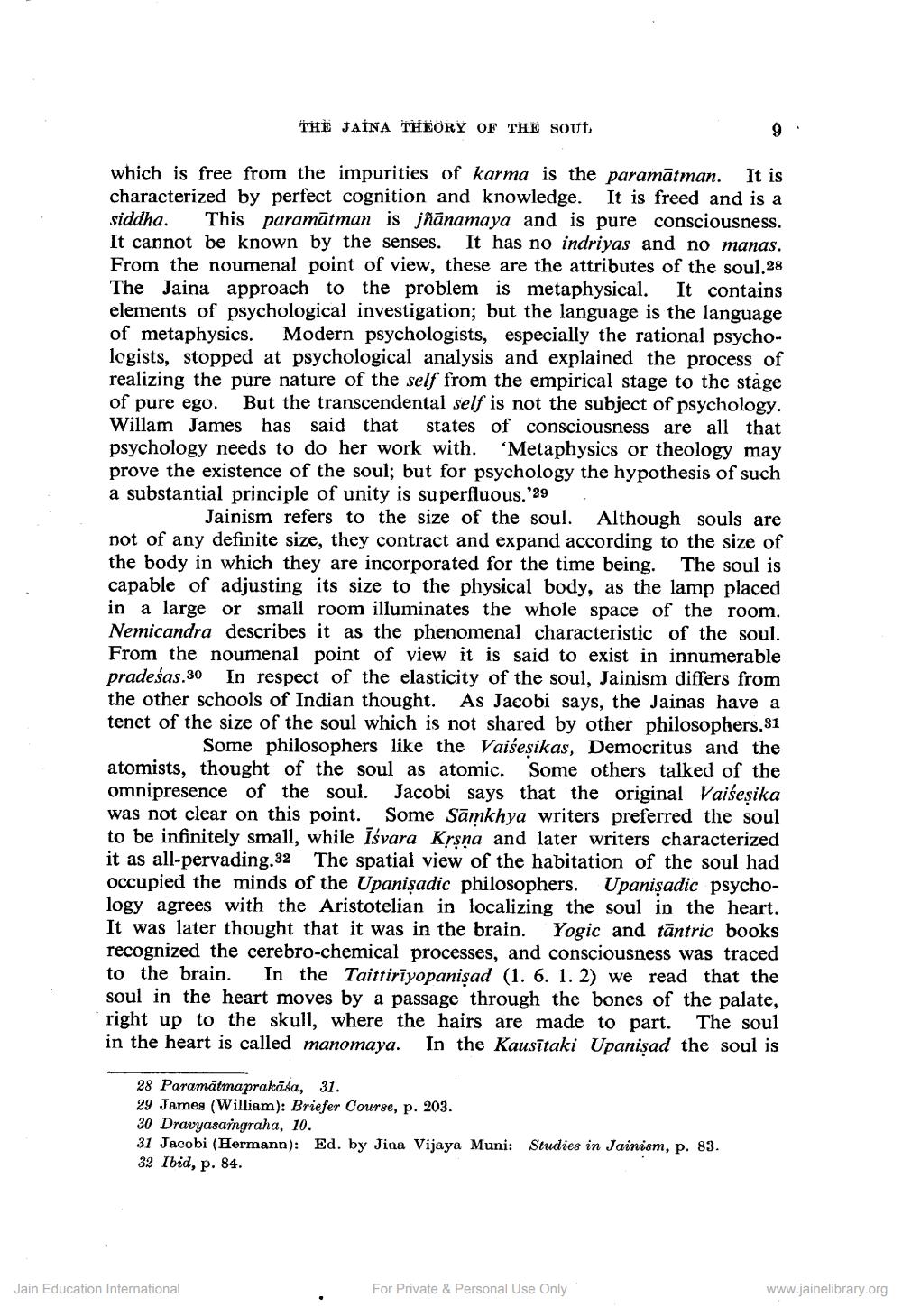________________
THE JAINA THEORY OF THE SOUL
9
.
which is free from the impurities of karma is the paramātman. It is characterized by perfect cognition and knowledge. It is freed and is a siddha. This paramātman is jñānamaya and is pure consciousness. It cannot be known by the senses. It has no indriyas and no manas. From the noumenal point of view, these are the attributes of the soul.28 The Jaina approach to the problem is metaphysical. It contains elements of psychological investigation; but the language is the language of metaphysics. Modern psychologists, especially the rational psychologists, stopped at psychological analysis and explained the process of realizing the pure nature of the self from the empirical stage to the stage of pure ego. But the transcendental self is not the subject of psychology. Willam James has said that states of consciousness are all that psychology needs to do her work with. ‘Metaphysics or theology may prove the existence of the soul; but for psychology the hypothesis of such a substantial principle of unity is superfluous. '29
Jainism refers to the size of the soul. Although souls are not of any definite size, they contract and expand according to the size of the body in which they are incorporated for the time being. The soul is capable of adjusting its size to the physical body, as the lamp placed in a large or small room illuminates the whole space of the room. Nemicandra describes it as the phenomenal characteristic of the soul. From the noumenal point of view it is said to exist in innumerable pradeśas.30 In respect of the elasticity of the soul, Jainism differs from the other schools of Indian thought. As Jacobi says, the Jainas have a tenet of the size of the soul which is not shared by other philosophers.31
Some philosophers like the Vaiseșikas, Democritus and the atomists, thought of the soul as atomic. Some others talked of the omnipresence of the soul. Jacobi says that the original Vaiśeșika was not clear on this point. Some Samkhya writers preferred the soul to be infinitely small, while Iśvara Krsna and later writers characterized it as all-pervading.32 The spatial view of the habitation of the soul had occupied the minds of the Upanişadic philosophers. Upanişadic psychology agrees with the Aristotelian in localizing the soul in the heart. It was later thought that it was in the brain. Yogic and tāntric books recognized the cerebro-chemical processes, and consciousness was traced to the brain. In the Taittiriyopanisad (1. 6. 1. 2) we read that the soul in the heart moves by a passage through the bones of the palate, right up to the skull, where the hairs are made to part. The soul in the heart is called manomaya. In the Kausītaki Upanişad the soul is
28 Paramātmaprakāša, 31. 29 James (William): Briefer Course, p. 203. 30 Dravyasaingraha, 10. 31 Jacobi (Hermann): Ed. by Jina Vijaya Muni: Studies in Jainism, p. 83. 32 Ibid, p. 84.
Jain Education International
For Private & Personal Use Only
www.jainelibrary.org




